So for the last 48 hours Justin Knight and I have been busy working hard at the optical alignment of MagAO-X. On Saturday, after 30 hours of travelling we arrived at LCO, and had a great dinner (delivered to our door here at LCO as we are in the bubble for the next 3 days). Then right after dinner we inserted the upper periscope mirror and aligned the upper optical table of MagAO-X to the lower table. This then allowed the rest of the team (led by Jared) to cable and optically test the Tweeter connections (with the PyWFS camera) on Sunday.
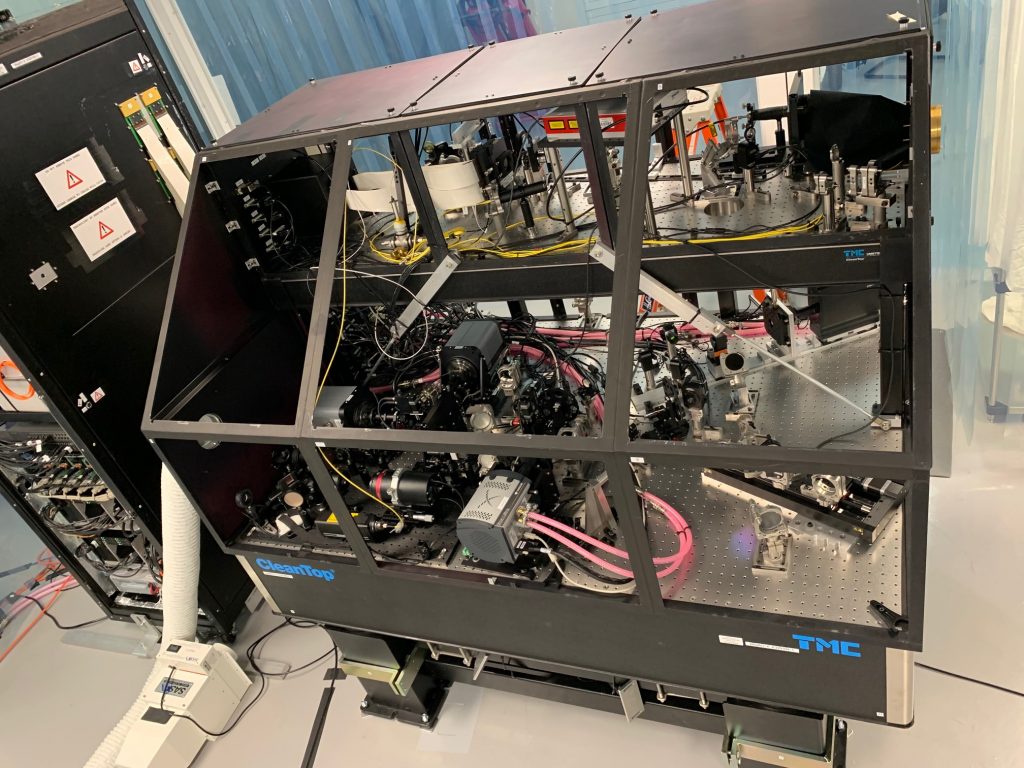
After some much needed sleep we checked all the optical beam paths on Sunday afternoon. We also set up the PEPS II floating table control system — which is cool since it allows the whole MagAO-X to float on a cushion of air — eliminating vibrations from the lab floor. That allows for really excellent stable images (no burring due to floor vibrations shaking optics).
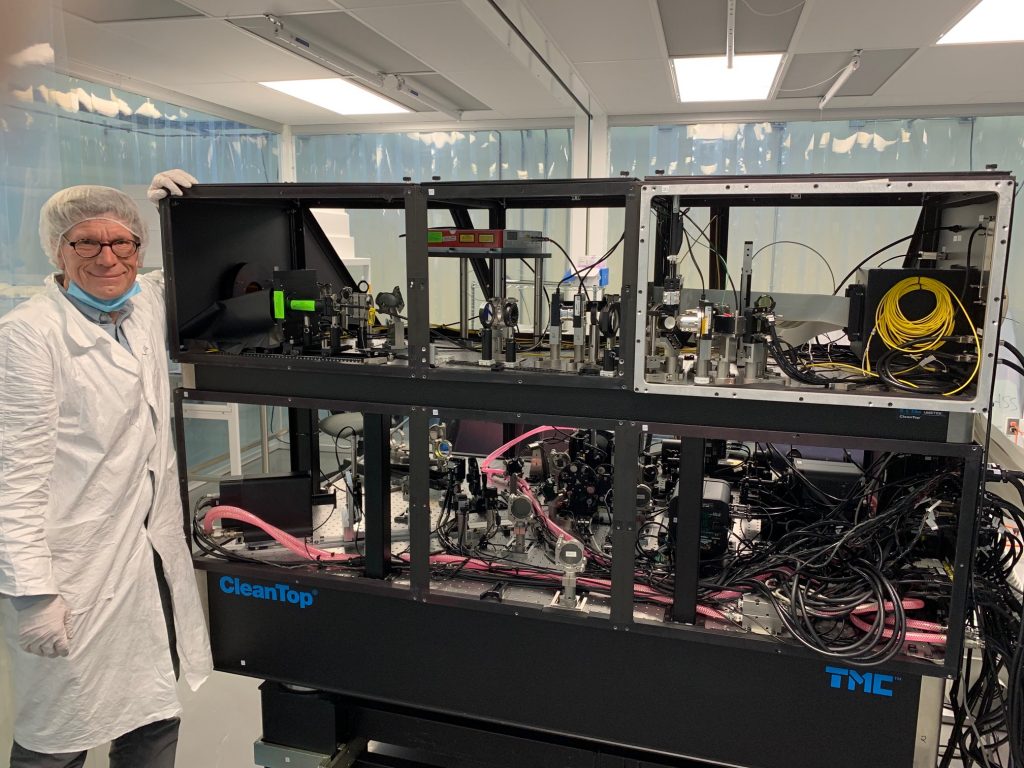
The optics were well aligned with our bright laser (or at least we thought so). But… later that night we looked with our default white light laser and found that there was slight “clipping” of one beam in one place somewhere in the 7.5 meter optical train. But it wasn’t obvious where it was on Sunday night (and we were tired since it was midnight).
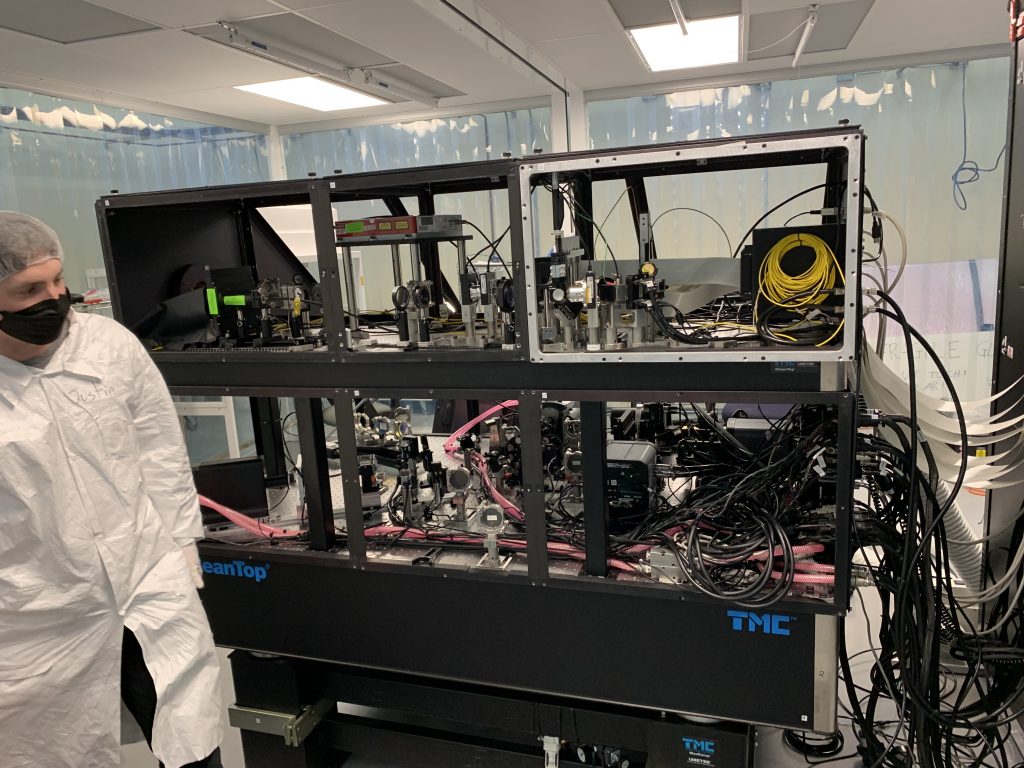
But by Monday morning (instead of working on my telescope proposal that was due at noon today) I realized where exactly the “clipping” was likely coming from. Indeed Justin and found this and fixed it (see photo below).
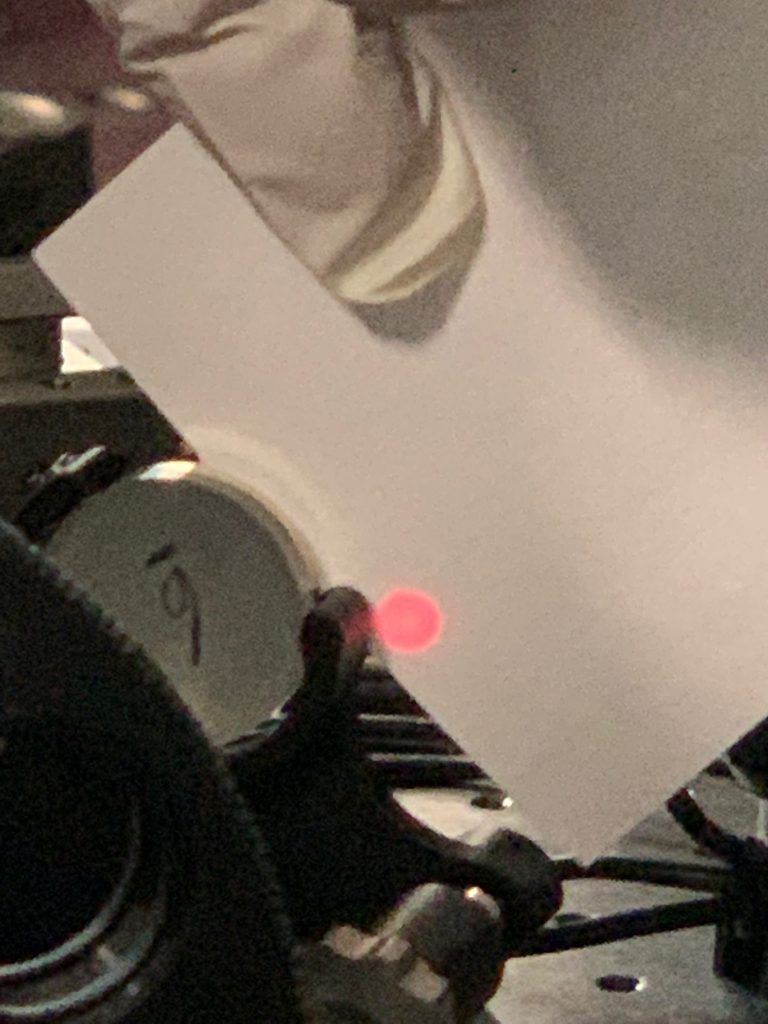
The beam was a few mm to far to the right and was just slightly clipping one of the mounts of the PyWFS optical train (there are 42 optical surfaces in MagAO-X’s science optical train –it can be exciting tracking just one slight optical clipping down!). But one way another we knew we’d find it eventually.
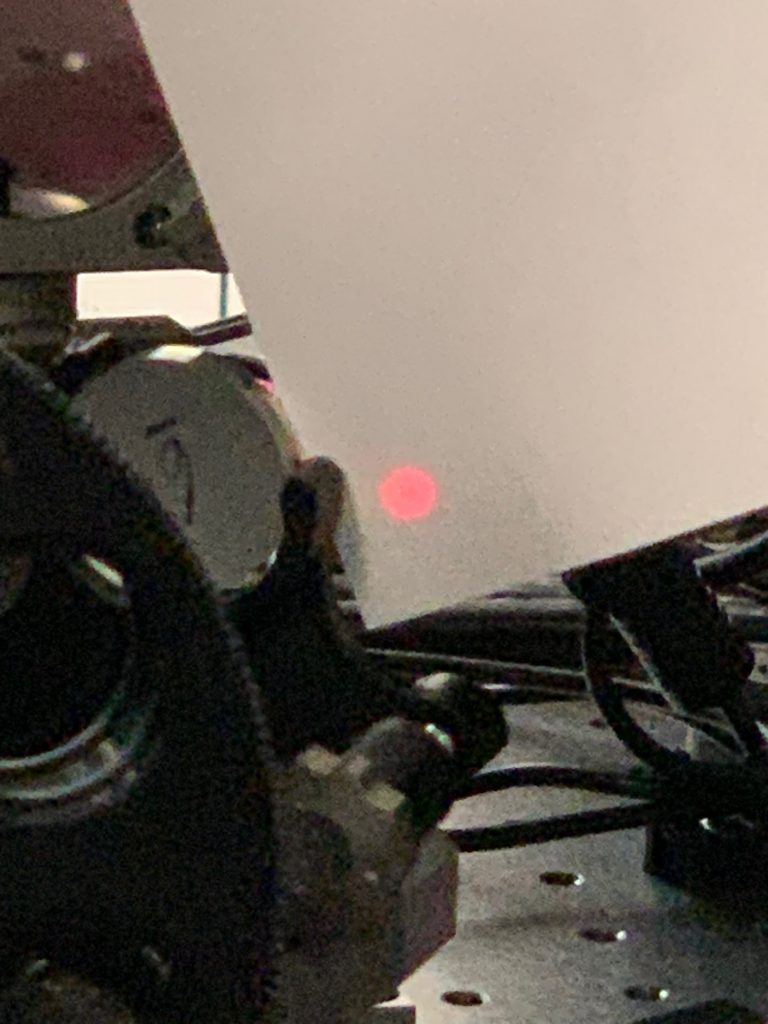
Anyways MagAO-X is realigned with lots of room for the beam to move around without any similar clipping (see photo above). To test this Jared rotated the K-mirror so that we simulated the Magellan telescope to move from vertical pointing to just 30 degrees above the horizon (K-mirror rotated from -55 to -25 deg) . Even though the beam sweeps through a large volume in this full simulation of observing conditions –no other “beam clipping” were observed. So the optical alignment looks like it is ready to go on sky. Now MagAO-X is dust proof with all its panels on. Sebastiaan was able to very quickly make a nearly perfectly flat wavefront. So like MagAO-X is making “outer space-quality” images–at least in the lab (see photo below).
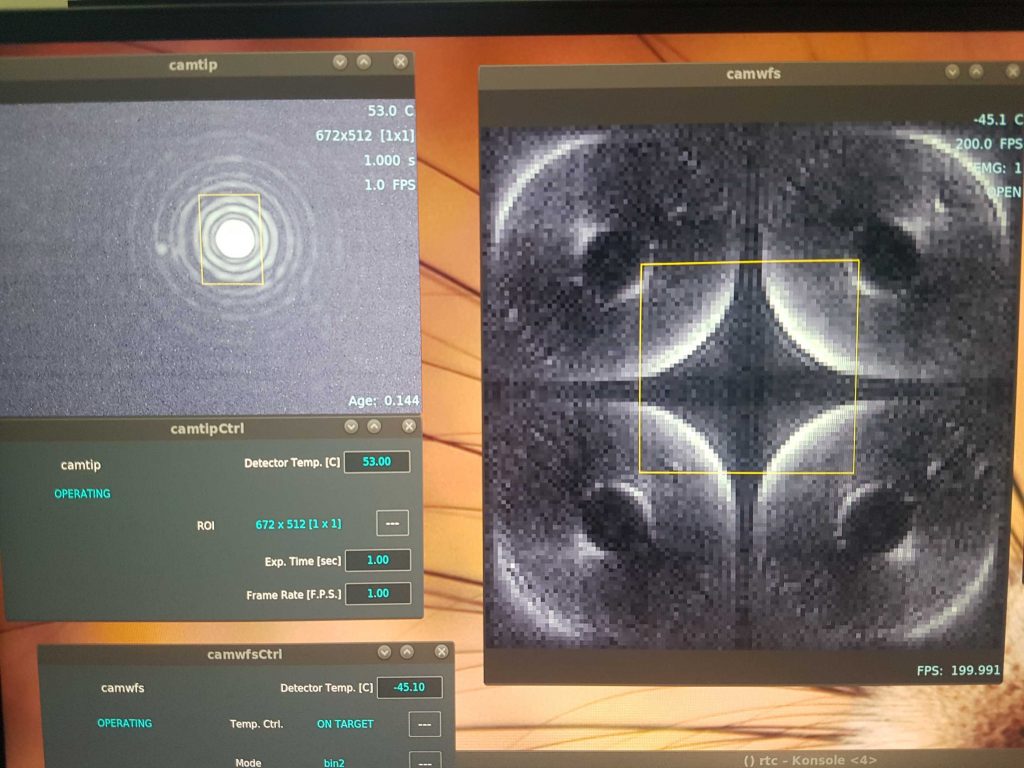
But perhaps the most import data I took so far this run (so far) is seeing two vizzys just hanging out at the clean room
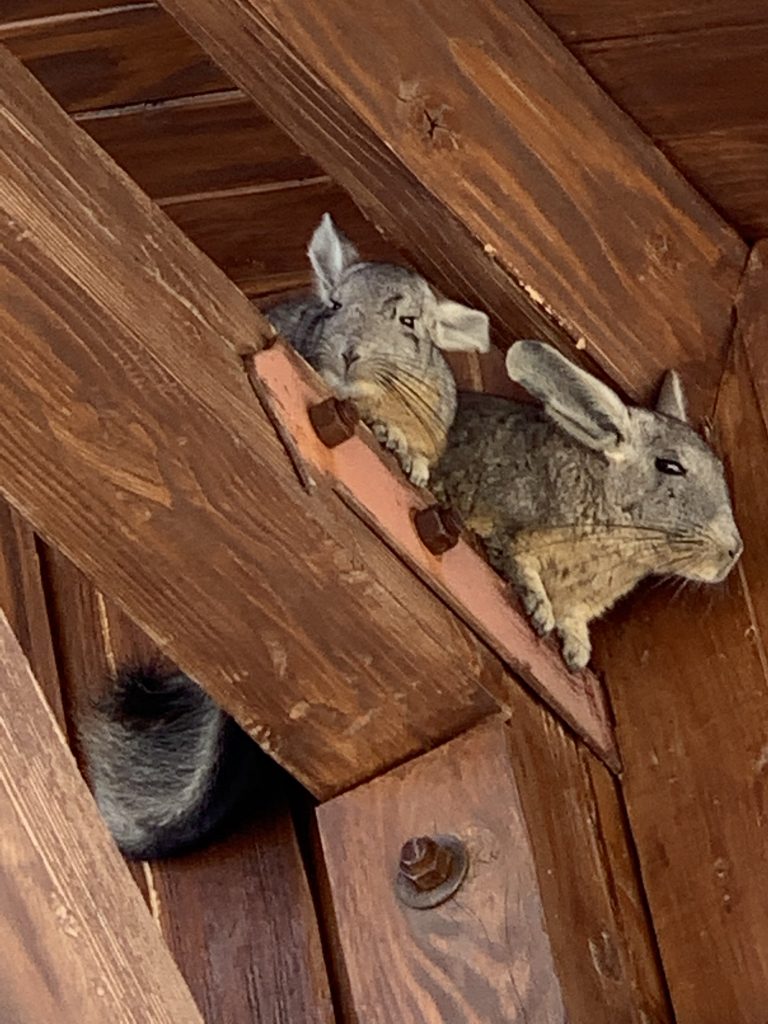
Still lots of work to do, but the optical alignment phase is mostly over until we align to the telescope on Saturday!
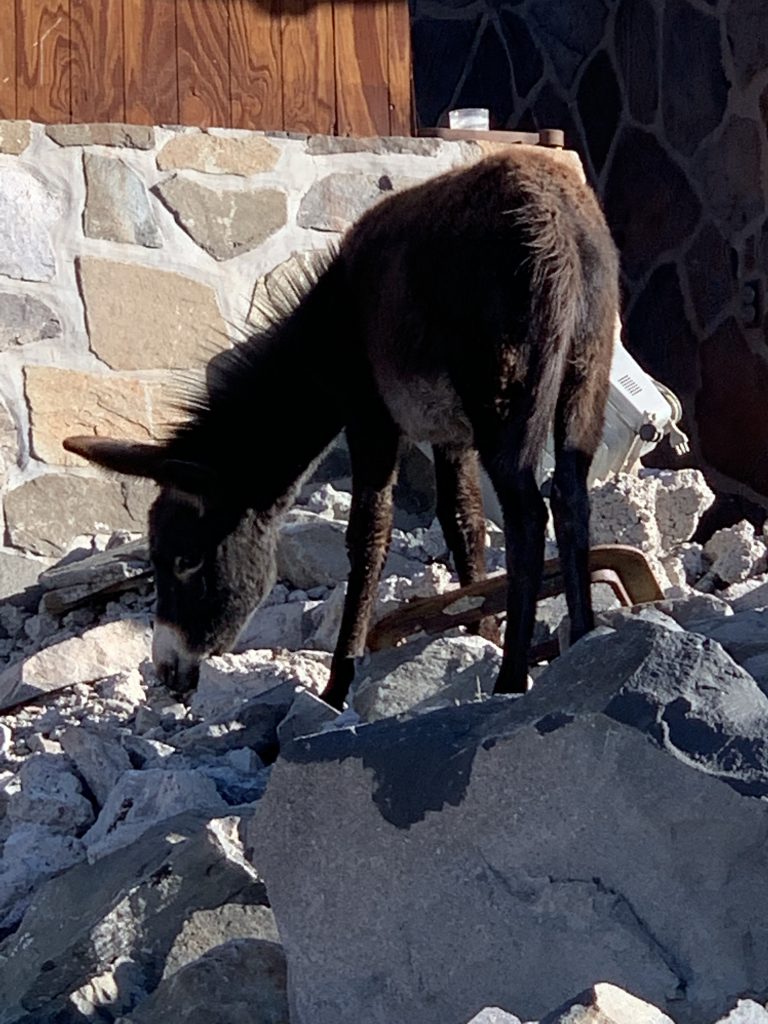
So here is my song of the day. One way or another we where going to align MagAO-X’s twin optical beams into parallel lines…